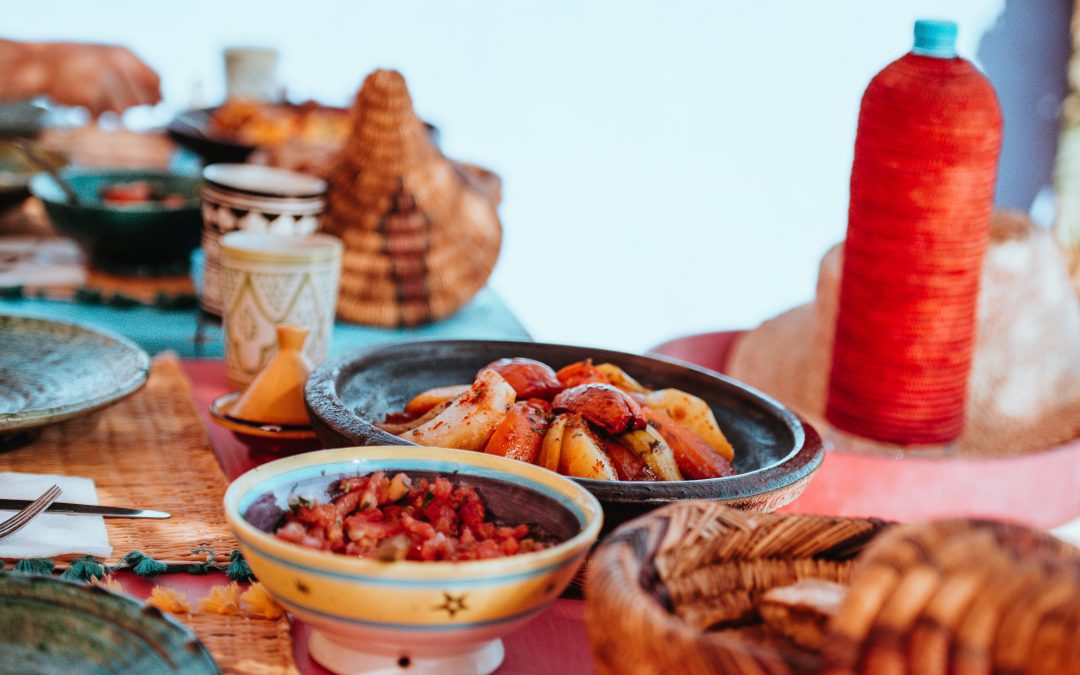Discover in this article the Moroccan specialties, hang on International Horizons will make you salivate!
The tagine :
On commence par un grand classique marocain dont tout le monde a entendu parlé. Tu as surement déjà vu le couvercle conique utile pour déposer du bois, mais as tu déjà goûté le trésor qui s’y trouve ? Le tajine, tagine ou encore tadjine en arabe, est un ragout cuit à l’étouffé. Ainsi tu retrouves comme aliment de la viande qui varie avec du poulet ou parfois du poisson, des légumes et fruits avec épices et d’huile d’olive. Et puis on cuit à feu doux et en mijotant, de cette façon on ne perd aucunes saveurs des aliments.
À déguster avec trois doigts et un morceau de galette de pain.
Couscous :
Then comes the tajine, the second emblematic dish of Morocco: couscous, kuskus in Arabic and seksu in Berber. Even if you can find this culinary speciality in France, in Morocco you will taste the authenticity of the legendary Berber dish. As in the tajine you have in your plate bright colours thanks to the spices, meat like fish, chicken and this time beef, which is completed with vegetables. To finish, the whole dish is flavoured with olive oil. There are variations of couscous as a dessert by adding sugar.
Brik :
The third culinary speciality of Morocco is brik, or bourek. This preparation is very common in the Middle East and in the Maghreb countries. But there are variations in each country. In Morocco, brik sheets are stuffed with minced meat and kiri cheese. In meals, brik often accompanies other more important preparations, so it serves as a side dish. In terms of taste experience, it is exceptional as the brik leaf guarantees a crispy bite and a balanced mixture of spices often paprika, turmeric, and sometimes cinnamon.
Moroccan Tabbouleh :
Tabbouleh is very popular in France, and the one we eat is of Lebanese origin. Morocco has its own version of tabbouleh. It differs by using semolina instead of bulgur, covered with vegetables, olive oil and lemon.
The harira :
There is nothing better than a good old soup. It is popular during the month of Ramadan, and Moroccans accompany it with sweets such as dates, fruit, pancakes and pastries like the Chebakia below. The soup itself consists of tomatoes, vegetables, meat and onions.
Chebakia :
For a change, chebakia or m’kharqa is one of the most popular pastries in Morocco. Boiling vegetable oil is used for cooking, and then the cooked dough is rolled in honey and sesame seeds. There are several variations depending on the region. This preparation is often found during the religious events of Ramadan or during weddings.
Inscris-toi ici et International Horizons trouve ton stage au Maroc.

